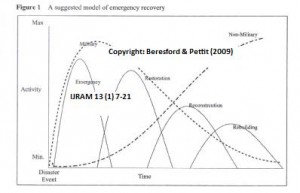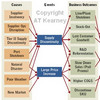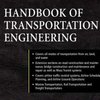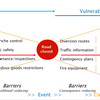 Can commercial logistics’ ideas and solutions work in humanitarian supply chains? No. Why? Well, perhaps they could work, but in most cases they won’t, simply because there is a profound lack of technical logistics knowledge in many aid agencies and even more so, very few experienced logisticians working in the Humanitarian Aid community. That’s what Anthony Beresford and Stephen Pettit say in their 2009 article Emergency logistics and risk mitigation in Thailand following the Asian tsunami. This scarcity of qualified logistics know-how impacts directly on the functioning of the relief effort. So they say…
Can commercial logistics’ ideas and solutions work in humanitarian supply chains? No. Why? Well, perhaps they could work, but in most cases they won’t, simply because there is a profound lack of technical logistics knowledge in many aid agencies and even more so, very few experienced logisticians working in the Humanitarian Aid community. That’s what Anthony Beresford and Stephen Pettit say in their 2009 article Emergency logistics and risk mitigation in Thailand following the Asian tsunami. This scarcity of qualified logistics know-how impacts directly on the functioning of the relief effort. So they say…
Humanitarian logistics versus commercial logistics
The authors lament that
Commercial supply chain management literature is extensive and often related to specific industries, reflecting the fact that logistics or supply chain solutions may not be directly transferable between industries.
Not only that. Commercial logistics is also seldom directly transferable to humanitarian logistics, because
- humanitarian aid more often than not relies on voluntary contributions of finance and labor
- the end consumers are seldom or never part of a regular commercial transaction
- final delivery will be in a country with no established logistics community and/or with no functioning infrastructure for delivery
- government or military involvement may put severe constraints on delivery, and
- the environment may be politically (militarily) unstable
Given these circumstances, there is very little in commercial logistics that is transferable to emergency logistics.
Emergency recovery model
Traditional disaster management divides the response and recovery operations into 3 (5) key elements, in this time order: (prevention, mitigation) preparedness, response, recovery. Add to that military and non-military efforts and rebuilding, and you get the figure below:
 I think this figure excellently illustrates the different phases and how they interface with military and non-military operations. I always like papers with good figures that really illustrate what the paper is all about.
I think this figure excellently illustrates the different phases and how they interface with military and non-military operations. I always like papers with good figures that really illustrate what the paper is all about.
Emergency Response Master Plan
The article then details the Thai Disaster Prevention Master plan, underscoring that logistics requirements are only implicitly mentioned, not explicitly, whereas local and regional responsibilities for preparedness and response are clearly stated, indicating that key supplies are necessary, but leaving it up to the local agencies to acquire whatever is necessary, should the need arise. That is the key to the economic resilience of a community. Transportation or logistics are not specifically mentioned, although they underpin most of the activities in the plan. The cooperation between military and humanitarian supply chains that I highlighted in a previous post is also not mentioned, perhaps because it is not an issue in Thailand?
Critique
In hindsight, after reading, I must say that the article falls slightly short of its promising abstract. While it does highlight the post-tsunami effort made by the Thai government, and while it does explain why local bottom-up preparedness works better than a top-down large scale emergency plan, the initially emphasized bearings on emergency or humanitarian logistics seem to dissipate somewhere between the first and the last page. Maybe I missed it, but I am no wiser as to emergency logistics after reading the article then I was before. That said, what the article does make a brilliant point of is that efficient and quick cross-agency communication is key in all emergency operations. And that is at the core of most operations; without communication, nothing works well, not even the most carefully designed logistics plan. Communication is what underpins flexibility, is what underpins logistics that can adapt to the circumstantial constraints.
Reference
Beresford, A., & Pettit, S. (2009). Emergency logistics and risk mitigation in Thailand following the Asian tsunami International Journal of Risk Assessment and Management, 13 (1), 7-19. DOI: 10.1504/IJRAM.2009.026387
Author link
- cardiff.ac.uk: Anthony Beresford
- cardiff.ac.uk: Stephen Pettit
Recommended book
 This is a book I came across while doing some background research for this post. Unfortunately for most of my readers it’s in German, but nonetheless, for me and my German-speaking readers I intend to get hold of it and review it in the near future: Dorit Bölsche (2009) Internationales Katastrophenmanagement: Logistik und Supply Chain Management. The title translates into something like “International Disaster Management – Logistics and Supply Chain Management” and sounds very promising.
This is a book I came across while doing some background research for this post. Unfortunately for most of my readers it’s in German, but nonetheless, for me and my German-speaking readers I intend to get hold of it and review it in the near future: Dorit Bölsche (2009) Internationales Katastrophenmanagement: Logistik und Supply Chain Management. The title translates into something like “International Disaster Management – Logistics and Supply Chain Management” and sounds very promising.
Related
- husdal.com: Humanitarian and military supply chains side by side
- husdal.com: BBC Word Debate: Disasters – Prepare or React?











